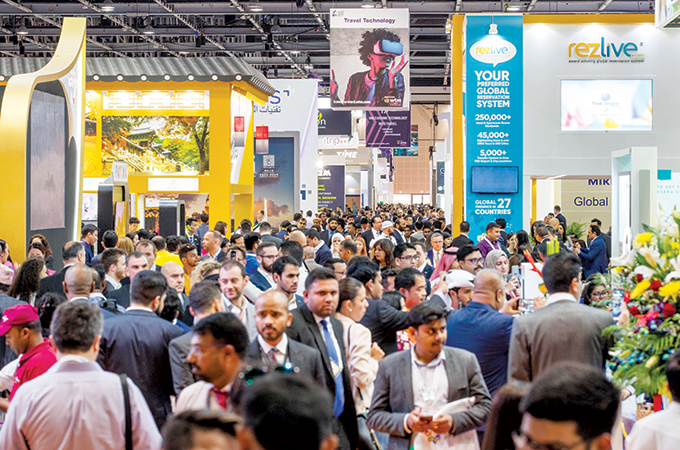The Middle East’s largest travel trade event, Arabian Travel Market (ATM) 2018, celebrated its 25th year, with over 2,500 exhibiting companies and an estimated 40,000 visitors, showcasing the largest-ever hotel exhibition space in the show’s history

The 2018 edition of the show welcomed more than 2,500 exhibiting companies and 40,000 visitors, with over 150 countries represented, 65 national pavilions, and more than 100 new exhibitors.
MASSIVE INVESTMENT
According to the latest research, GCC capital investments in tourism infrastructure are expected to reach $56 billion by 2022, with the UAE ranked the most competitive in the region, driven by the development of multiple revolutionary transport projects.
According to Arabian Travel Market’s research partner, Colliers International, lightening-speed, innovative Hyperloop train systems combined with the Haramain High Speed Railway, the development of key international airports in Saudi Arabia and airport expansion in the UAE, Bahrain, Oman and Kuwait are just some of the projects set to transform tourism infrastructure development in the GCC.
Virgin Hyperloop One, a futuristic transportation concept through which pods, propelled by magnets and solar, will move passengers and cargo at speeds of 1,200kph, is the most prominent tourism infrastructure development in the UAE at present.
Backed by Dubai-based DP World, Hyperloop One has the potential to transport approximately 3,400 people an hour, 128,000 people a day and 24 million people a year.
In November 2016, Dubai’s Road and Transport Authority (RTA) announced plans to evaluate a hyperloop connection between Dubai and Abu Dhabi, which could reduce travel times between the two emirates by 78 minutes.
Hyperloop One isn’t the only concept to boost tourism infrastructure in the region. Airport and cruise terminal expansions, improved domestic inter-city road and rail work and the growth of low-cost airlines will keep the GCC at the forefront of tourism infrastructure and innovation.
Air passenger arrivals to the GCC are forecast to increase at a compound annual growth rate (CAGR) of 6.3 per cent, from 41 million in 2017 to 55 million in 2022.
EUROPEAN VISITORS TO INCREASE
Arrivals from Europe to the GCC will increase 17 per cent over the period 2018 to 2020, driven by extra flights, routes, competitive fares, and the rising number of mid-market hotels throughout the region, according to the latest data.
According to Colliers International as many as 24.6 million European Union residents will travel to the GCC between now and 2020, an additional four million travellers when compared to figures for 2015 to 2017.
The UAE and Saudi Arabia continue to be the preferred GCC destinations for European visitors, together they are on track to welcome 81 per cent of the projected business and leisure travellers. The UAE is expected to receive 14.5 million, Saudi Arabia 5.4 million, Oman 2.21 million, Bahrain 1.72 million and Kuwait 738,000, by 2020.
Besides Emirates’ new route to Stansted airport in the UK, flydubai started flying to Krakow in Poland last month, further extending the carrier’s Eastern and Central European network, to 24 destinations, including Belgrade, Bratislava, Bucharest, Prague, Skopje,
Sarajevo and Sofia.
Furthermore, GCC hotel developers have turned their attention to quality mid-market properties with Dubai and Riyadh now home to a collection of four-star hotels flagged by names such as Aloft, Centro and Studio M. This growth will continue with a 19.1 per cent compound annual growth rate (CAGR) forecast in four-star development between 2018 and 2020.
Colliers data indicates GCC travel to Europe will grow 36 per cent over the next three years, with a forecasted 8.5 million GCC residents projected to visit Europe. While part of this growth can be attributed to the UAE and Saudi Arabia’s large expatriate populations, GCC nationals are no strangers to European destinations, its culture, history, as well as its retail and luxury hospitality offerings.